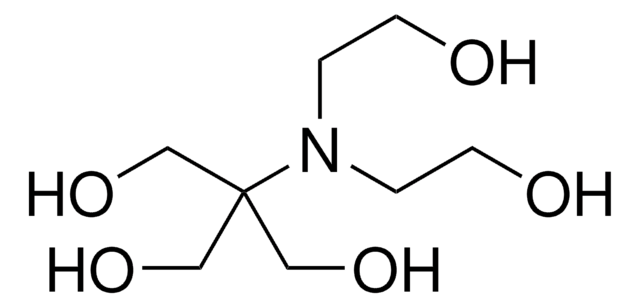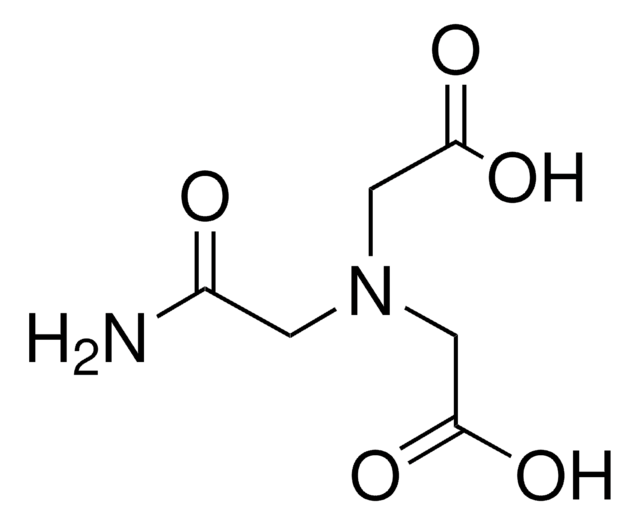A9883
ADA
≥98% (titration)
Synonym(s):
N-(2-Acetamido)iminodiacetic acid, N-(Carbamoylmethyl)iminodiacetic acid
About This Item
Recommended Products
Quality Level
Assay
≥98% (titration)
form
powder
pH
1.5-3.0
useful pH range
6.0-7.2
pKa (25 °C)
6.6
mp
219 °C (dec.) (lit.)
solubility
1 M NaOH: 160 mg/mL, clear, colorless
application(s)
diagnostic assay manufacturing
storage temp.
room temp
SMILES string
NC(=O)CN(CC(O)=O)CC(O)=O
InChI
1S/C6H10N2O5/c7-4(9)1-8(2-5(10)11)3-6(12)13/h1-3H2,(H2,7,9)(H,10,11)(H,12,13)
InChI key
QZTKDVCDBIDYMD-UHFFFAOYSA-N
Looking for similar products? Visit Product Comparison Guide
General description
Application
Preparation Note
Signal Word
Warning
Hazard Statements
Precautionary Statements
Hazard Classifications
Acute Tox. 4 Oral
Storage Class Code
13 - Non Combustible Solids
WGK
WGK 3
Flash Point(F)
Not applicable
Flash Point(C)
Not applicable
Personal Protective Equipment
Choose from one of the most recent versions:
Already Own This Product?
Find documentation for the products that you have recently purchased in the Document Library.
Our team of scientists has experience in all areas of research including Life Science, Material Science, Chemical Synthesis, Chromatography, Analytical and many others.
Contact Technical Service






